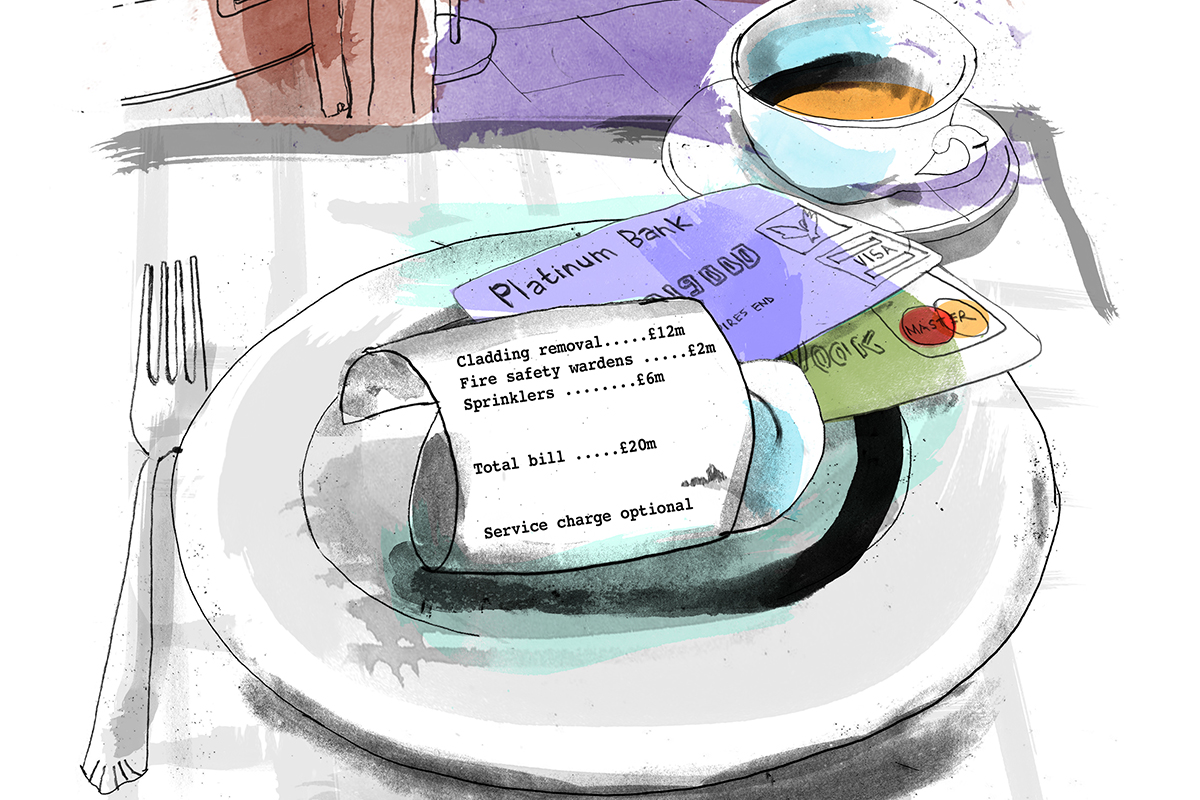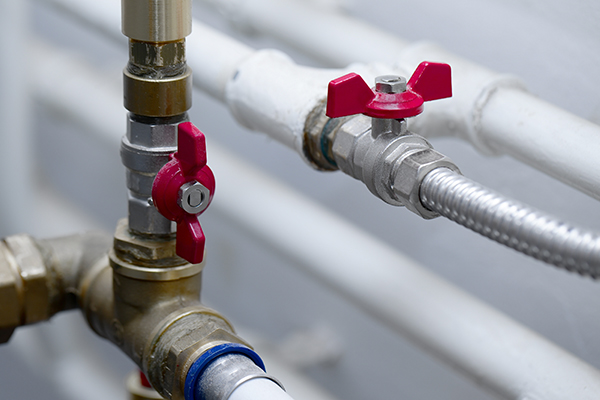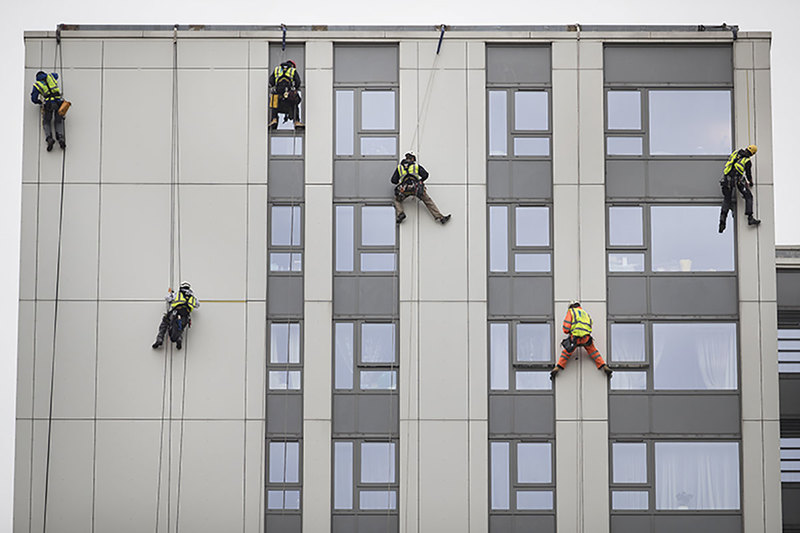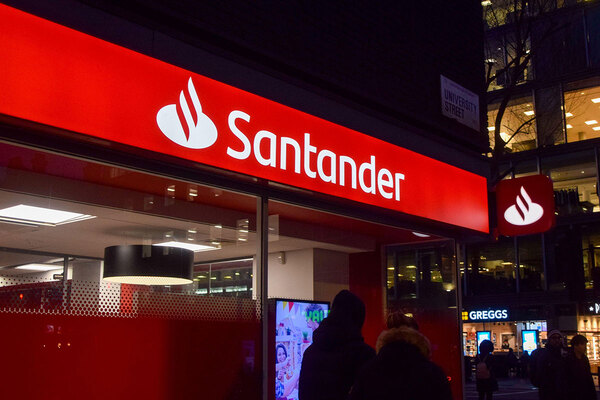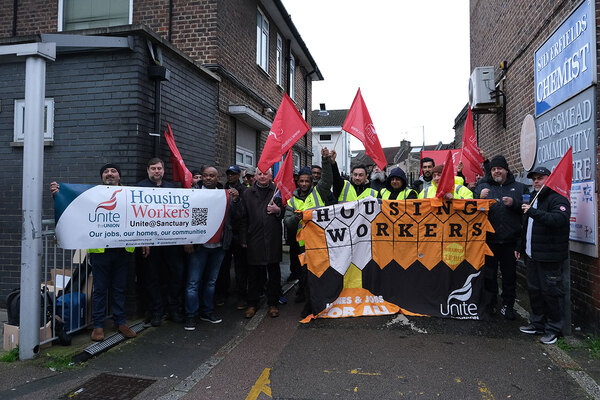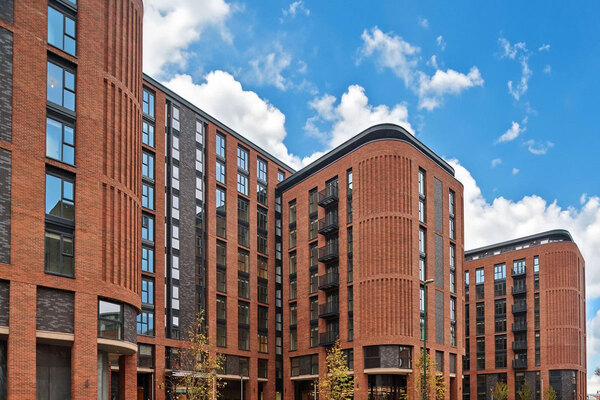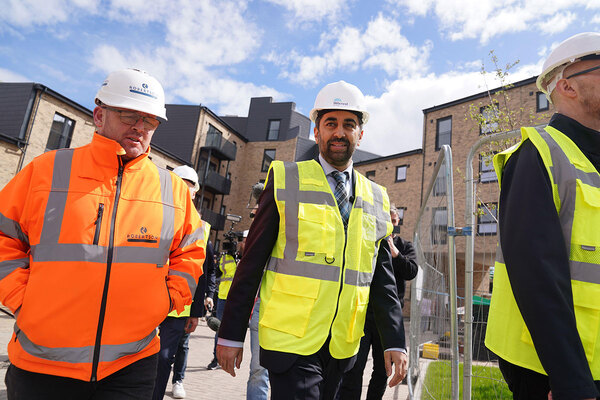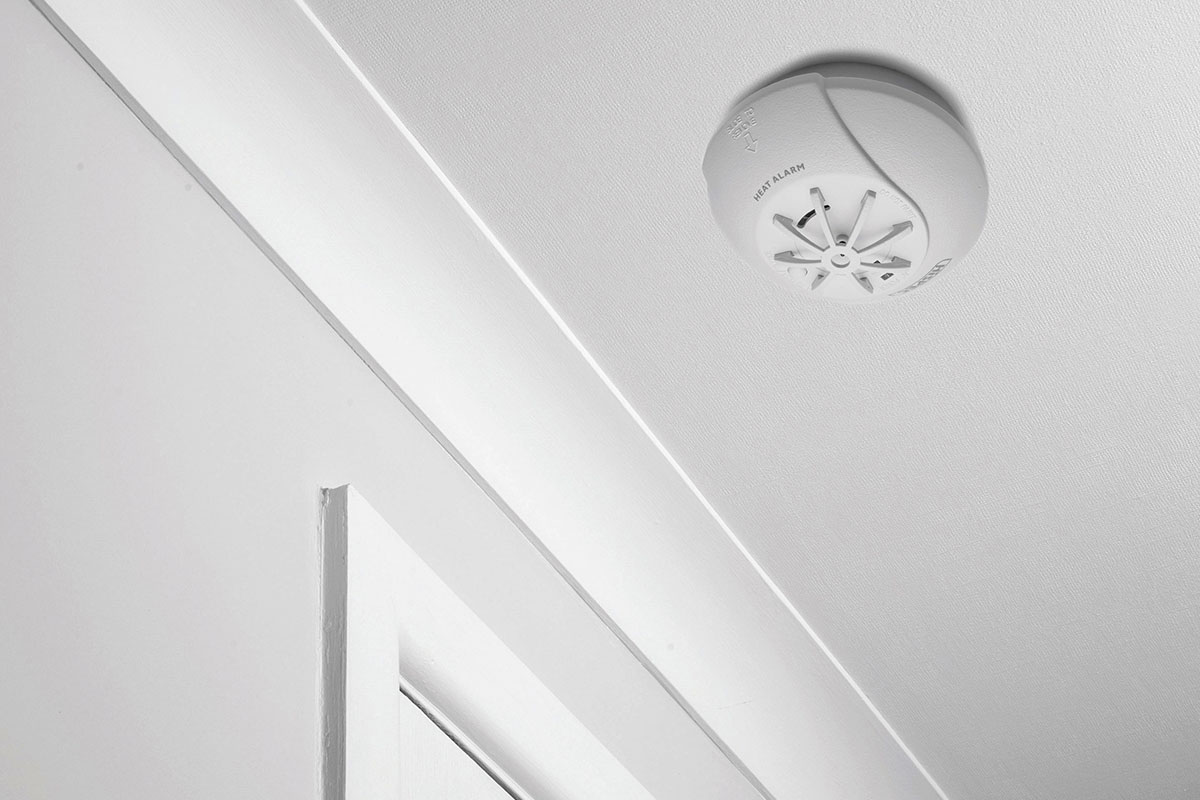You are viewing 1 of your 1 free articles
Fire safety: who foots the bill?
The battle over who will pay for cladding removal has only just begun. Nathaniel Barker takes a look at what shape this row could take over the coming years. Illustration by Patrick Morgan
At around one in the morning on 14 June this year, a new era began in social housing.
The post-Grenfell age has moved the parameters of debate about investment in homes.
Unlike the previous era of austerity, the question is no longer "should we spend money?", but "how much - and who should pay?" Removing dangerous cladding and improving fire safety are no longer optional.
So this latter question is already starting to look vexed. The bills for cladding removal, sprinklers and other changes are mounting and the question is beginning to turn, inevitably, to who picks up the tab.
Pushing ahead
It now looks certain that the answer will be councils and housing associations. The government has repeatedly said it will not allow financial restrictions to prevent work going ahead, but it is now clear that would only apply where a social landlord faced bankruptcy if it tried to do the work itself.
In a revealing letter, seen last week by Inside Housing, Alok Sharma declined a request by Nottingham City Council for help with the £6m cost of retrofitting sprinklers in its blocks. In doing so he revealed the government expects “building owners” to fund the cost of improvements and regards sprinklers as “additional, not essential” work.
But this may not be the end of the story. Social landlords are already reviewing their options and the final decision about where the bill will fall, in particular for cladding removal, is likely to be one decided by the courts, with contractors, leaseholders and landlords all potentially on the hook. Here, we take an early look at how this battle could pan out.
The most high-profile example so far of a landlord considering legal action has been in Camden. In the wake of Grenfell, the north London council became aware of significant flaws on four towers at its Chalcots Estate in Swiss Cottage, London.
“We expect providers to look into whether they have recourse against third parties.”
The issues were extensive, but one particular sticking point has been the buildings’ cladding. It was installed by Rydon and subcontractor Harley Facades – the same pair that carried out the now-infamous refurbishment of Grenfell Tower last year – under a private finance initiative contract. Work to remove the cladding system started this month after it failed the government’s in-depth combustibility tests.
Legal challenge
Georgia Gould, leader of Camden Council, had strong words for Rydon. She said the panels “were not to the standard that we had commissioned” and that as such the authority would “be taking urgent legal advice”. Rydon vociferously denied this accusation, hitting back with its own threat of legal action against these “inflammatory” and “highly damaging” remarks.
Camden is not alone in exploring the legal route as a way of finding ways to pay for cladding work, according to Helen Stuart, senior associate at law firm Trowers & Hamlins. She says: “Given that the government’s current expectation is that landlords will fund any remedial works from their own resources, and the high costs of these works, we would expect most affected housing providers to look into whether they have any recourse against any third parties in respect of these blocks.”
For landlords to have any case for a claim against a contractor, a few things will need to be determined, Ms Stuart explains. “The first step is to establish whether there is a defect in the works which needs to be remedied. Once you have established that, you need to look at whether any third parties owe obligations in respect of the defective works, whether contractually or otherwise, and what those obligations are. You will need to appoint technical experts to give their opinion as to whether those obligations have been breached as a result of the defect.”
Read more about our Never Again campaign here
Simply put: is there something wrong with the cladding due to either substandard workmanship to install the system, or because the product used is not what was requested? Then, does the small print on the contract agree that the builder must put it right?
But there are a number of challenges here. For one thing, “defect” specifically relates to the contract. That means cladding which has failed fire safety tests and been found out as potentially dangerous is not necessarily defective in this sense.
“In terms of the cladding itself, it’s not prima facie a defect because it’s only a defect post-fact – at the time it was installed, there was no wrong committed,” says Charis Beverton, senior associate at Winckworth Sherwood. “The only way I can see that a claim could be made is if it becomes clear there was no reasonable basis for considering that this cladding was safe. Then you could start making claims against the builders or the surveyors but that is quite a difficult claim to make.”
Then there is the issue of responsibility. In many cases, Ms Beverton points out, tower block refurbishments where cladding has been installed are carried out by a “package” of contractors and sub-contractors. In the case of Grenfell, for instance, more than 60 companies and organisations were involved. That means it can be tricky to identify precisely who is responsible for, say, poorly fitted insulation behind cladding panels which render the system unsafe.
In addition, it’s important to be clear on what replacement cladding system should be put in place. That’s because contractors should usually be given the opportunity to put the works right before entering into an all-out legal dispute, explains Ms Stuart. However, this is of course made harder by an ongoing lack of certainty over which types of cladding are safe.
Given these sticking points, some landlords, freeholders, contractors and sub-contractors have chosen to work collaboratively to put issues right as far as possible rather than reach for the statutes and casebooks, Ms Beverton claims. “From an industry perspective, it’s better just to fix it,” she says.
Service charges
Another potential route to recovering at least some of the cost of fire safety work is through leaseholder service charges.
Following legal advice, Wandsworth Council in south-west London is scoping out this option for its ambitious £24m plan to retrofit sprinklers in all 100 of its high-rise blocks. This week, its executive approved recommendations from Brian Reilly, the council’s director of housing and regeneration, to impose costs of between £3,000 and £4,000 on its 2,358 leasehold properties over an extended 48-month period.
But this might not be on the table for all social landlords.
“I think your default position is always going to depend on what your leases say,” says Emma Chadwick, partner at Winckworth Sherwood. “All of Wandsworth’s leaseholders are probably on similar terms, but for the vast majority of others it will be more complex. The general principle is you can only recover what it says you can recover. Most are very clear that you can just recover the repairs to the building.”
“Your default position is always going to depend on what your leases say.”
Indeed, in a report to the council’s executive, Mr Reilly wrote: “The standard Wandsworth Right to Buy lease contains a provision which enables the council ‘to do such things as the council may decide are necessary to ensure the efficient maintenance, administration or security of the block’.”
“Landlords need to treat every building and every type of work individually. There is no one size fits all. Housing associations will find themselves with lots of different leases as there are more variations in what they have in their portfolios,” adds Ms Chadwick.
David Firth, head of litigation at Capsticks, agrees. He says: “This question is likely to run and run. The starting point is to read the lease. Typically, it will allow for recovering via the service charge for repair works – assuming due consultation has taken place.
“The situation becomes more complex where the existing cladding is not in disrepair but is to be replaced nonetheless: does the lease allow for works of improvement to be recovered from leaseholders?”
Even if the lease does allow for fire safety works to be met through service charges, it is still wise to tread this path carefully, warns Ms Chadwick.
“You have to consider that if you give these people a huge bill they are likely to complain. Landlords need to bear in mind that just because the lease says you can, you might still face challenges from leaseholders.”
And in the current environment, a large falling-out with residents and a series of tribunals could be the last thing councils and housing associations need.
The debate over who foots the bill is only just beginning and will rumble on for years.
The only thing that is clear at this stage is that someone will have to pay. The highest price is the one for not acting.
Update: at 12:07 22.09.17
The article previously stated that Helen Stuart is a partner at law firm Trowers & Hamlins. This has now been corrected.
Never Again campaign
Inside Housing has launched a campaign to improve fire safety following the Grenfell Tower fire
Never Again: campaign asks
Inside Housing is calling for immediate action to implement the learning from the Lakanal House fire, and a commitment to act – without delay – on learning from the Grenfell Tower tragedy as it becomes available.
LANDLORDS
- Take immediate action to check cladding and external panels on tower blocks and take prompt, appropriate action to remedy any problems
- Update risk assessments using an appropriate, qualified expert.
- Commit to renewing assessments annually and after major repair or cladding work is carried out
- Review and update evacuation policies and ‘stay put’ advice in light of risk assessments, and communicate clearly to residents
GOVERNMENT
- Provide urgent advice on the installation and upkeep of external insulation
- Update and clarify building regulations immediately – with a commitment to update if additional learning emerges at a later date from the Grenfell inquiry
- Fund the retrofitting of sprinkler systems in all tower blocks across the UK (except where there are specific structural reasons not to do so)
We will submit evidence from our research to the Grenfell public inquiry.
The inquiry should look at why opportunities to implement learning that could have prevented the fire were missed, in order to ensure similar opportunities are acted on in the future.
